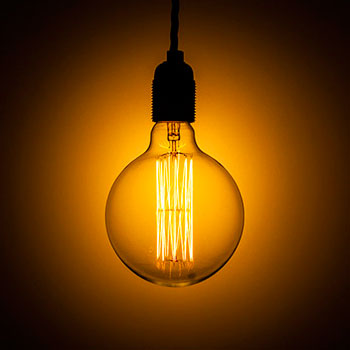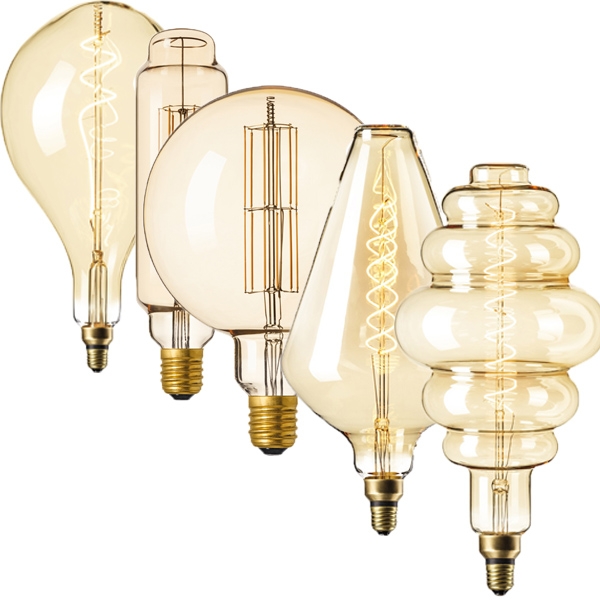Welcome to a bright new world of lighting! As someone who has always been fascinated by how lighting can transform spaces, I find decorative filament bulbs to be an absolute game-changer. Not only do they provide warm and inviting illumination, but they also bring a unique aesthetic appeal to any room. In this comprehensive guide, we’ll explore everything you need to know about decorative filament bulbs, from styles and benefits to tips for choosing the right ones for your space.
What Are Decorative Filament Bulbs?
Decorative filament bulbs, also known as vintage or Edison bulbs, are a type of light bulb that features a distinctive filament design visible through the glass. These bulbs combine the old-world charm of incandescent lighting with modern energy efficiency. They are perfect for creating an intimate ambiance in various settings, from homes to restaurants and cafes.
Types of Decorative Filament Bulbs
1. Edison Bulbs
Edison bulbs are perhaps the most iconic type of decorative filament bulb. Their exposed filaments provide a nostalgic feel reminiscent of the early 20th century.
2. Globe Bulbs
Globe filament bulbs have a round shape and cast a soft light that works well in pendant fixtures or chandeliers.
3. Tubular Bulbs
Tubular filament bulbs have a long, narrow shape and are often used in contemporary light fixtures for a sleek look.

Benefits of Using Decorative Filament Bulbs
Decorative filament bulbs offer numerous advantages that make them a popular choice among homeowners and designers alike:
- Energy Efficiency: Most decorative filament bulbs are now available in LED versions that consume less energy while maintaining the warm glow.
- Stylish Design: Their vintage aesthetics add character to any space, serving as both a light source and a decorative element.
- Versatile Applications: These bulbs can be used in various fixtures, including chandeliers, wall sconces, and pendant lights.
Comparison Table of Decorative Filament Bulbs
| Type | Lifespan (hours) | Wattage | Color Temperature (Kelvin) | Energy Source |
|---|---|---|---|---|
| Edison Bulbs | 1,000 | 40W | 2200K | Incandescent |
| LED Edison Bulbs | 15,000 | 6-10W | 2000K-3000K | LED |
| Globe Bulbs | 1,500 | 60W | 2700K | Incandescent |
| Tubular Bulbs | 15,000 | 6-8W | 3000K | LED |

How to Choose the Right Decorative Filament Bulbs
Choosing the right decorative filament bulbs involves several considerations:
1. Location and Purpose
Determine where you will use the bulbs. For dining areas, warm white bulbs create a cozy atmosphere, while bright white bulbs work well in workspaces.

2. Fixture Compatibility
Make sure the bulbs fit your fixtures. Check the base type and the maximum wattage allowed.
3. Color Temperature
Consider the color temperature that fits your decor. Warmer temperatures (2000K-3000K) are perfect for relaxation, while cooler temperatures (3000K-4000K) are better for task lighting.

Installation Tips for Decorative Filament Bulbs
Installing decorative filament bulbs can be straightforward, but here are some tips to ensure you do it safely and effectively:
1. Turn Off Power
Always switch off the power before installing or replacing bulbs to avoid electrical hazards.

2. Use the Right Tools
Use a ladder or step stool to reach high fixtures safely and avoid straining yourself.
3. Secure the Bulb
Ensure that the bulb is securely installed to prevent flickering or damage.

Personal Experience: My Journey with Decorative Filament Bulbs
When I first discovered decorative filament bulbs, I was captivated by their warm glow and vintage feel. I decided to replace the standard bulbs in my living room with Edison bulbs, and the transformation was mind-blowing. The space went from dull and uninviting to warm and cozy, perfect for gatherings or quiet evenings with a book. Discovering different fixtures and styles became a delightful hobby, and I found that mixing and matching can create a unique lighting scheme.
Pros and Cons of Decorative Filament Bulbs
Pros
- Stylish and vintage aesthetic
- Variety of shapes and styles available
- Energy-efficient options available
- Versatile for different lighting needs

Cons
- Some types have a shorter lifespan (incandescent)
- May produce less light than traditional bulbs (be mindful of wattage)
- Can be more expensive than standard bulbs
Common Mistakes When Using Decorative Filament Bulbs
A few common mistakes can detract from the beauty of decorative filament bulbs:
1. Overlooking Wattage
Using bulbs with too high a wattage can lead to overheating, which is dangerous. Always check compatibility.
2. Ignoring Placement
Placement can make or break the ambiance. Experiment with different heights and locations to find what works best.
3. Not Mixing Styles
Don’t hesitate to mix different shapes and types of filament bulbs! A variety can create a more dynamic look.
FAQs About Decorative Filament Bulbs
1. How long do decorative filament bulbs last?
Traditional incandescent decorative filament bulbs last about 1,000 hours, whereas LED options can last up to 15,000 hours.
2. Are decorative filament bulbs energy efficient?
LED decorative filament bulbs are highly energy efficient, consuming significantly less power than their incandescent counterparts.
3. Can I use decorative filament bulbs outdoors?
Yes, but ensure you choose bulbs specifically designed for outdoor use to withstand weather conditions.
4. What color temperatures are best for decorative filament bulbs?
Warmer temperatures (2000K-3000K) are generally preferred for living spaces, while cooler temperatures are suitable for work areas.
5. How can I clean decorative filament bulbs?
Use a dry microfiber cloth to gently wipe the glass surface. Avoid using harsh chemicals that can damage the finish.